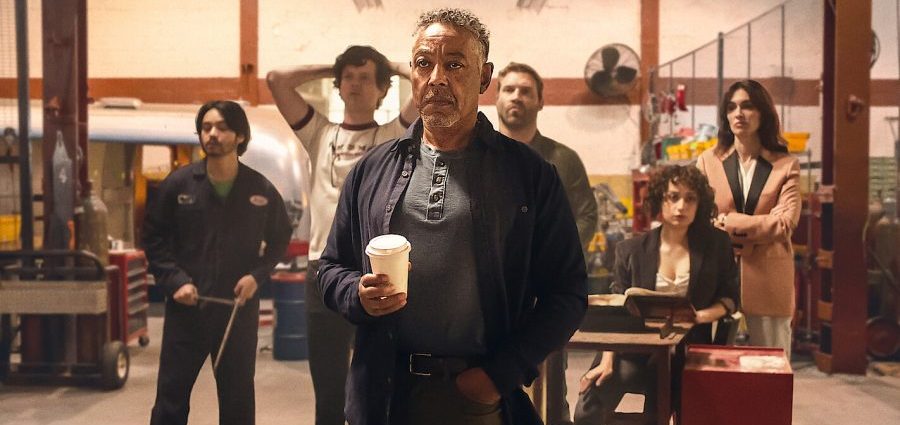Rating: 4 out of 5
“Kaleidoscope” is a heist series that I was able to enjoy more the second time around. Released by Netflix on Jan. 1, the show is designed so that viewers can watch the first seven episodes in any order. The show’s order is randomized by Netflix itself, providing each viewer with a unique order, making the order in which the viewer watches the show in to be irrelevant. While the show does follow the typical heist trope, its experimental format makes it unique and an overall enjoyable experience.
The story follows the ringleader Leo Pap (Giancarlo Esposito) and his crew in their attempt to steal 7 billion dollars from a highly secure vault. Each member of the crew specializes in a certain area; for instance, Judy Goodwin (Rosaline Elbay) is the chemist, and Bob Goodwin (Jai Courtney) is the safe-cracker. All of the characters’ special skills culminate in a crew that has all that’s needed to break into the vault. The different orders to watch the episodes make the story deviate from the heist cliché, as the first episode is not solely dedicated to exposition. In some sequences, the audience is transported straight into the middle of the heist and introduces the characters later, creating a nice change in pace and breaking from the heist stereotype.
While stereotypical, “Kaleidoscope” provides a reason for the heist besides just money: revenge built over 17 years. This makes the motive more powerful and the audience more invested in the crew pulling it off. The details of the plan are also brilliant. I found myself engaged in trying to understand how the plan would work and if the crew would succeed. The show does not rely on graphics to keep the audience interested, but rather the intricate planning of the heist itself through clever shots focused all around the board that shows how to execute the plan.
The acting in “Kaleidoscope” is superb. With the familiar face of Esposito, starring in “Breaking Bad”, “The Maze Runner” series, and “The Boys” as well as strong supporting actors, the story does a great job balancing the seriousness of the show with the fun of being in the crew. The facial expressions perfectly capture their own reasons for being a part of the heist. Pap’s cold look represents his motive for revenge while both the Goodwins wear much lighter expressions as they are only in it for the money. The pressure of the heist was broken up by comedy relief when the crew was all together.
While the variability in watchability is a cool concept, it is not without its flaws. By taking away the flow of a normal story, the episodes feel almost disconnected from each other. By watching the show in the numerical order I was given (Yellow, Green, Blue, Orange, Violet, Red, Pink, and in the final episode White), I felt myself not being able to clearly differentiate what was a flashback and what was in real-time even though the timeline is stated in the episode. The episode’s differentiability meant that some characters did not get as much development as they deserved. For instance, RJ Acosta (Jordan Mendoza), the driver of the group, does not build an identity besides just being the driver. After watching the story unfold in chronological order, I found myself enjoying the show more because I was able to keep up and understand each character’s motives better. However, this took away from the surprise of some twists that I would not have seen coming the first time around.
As Netflix’s first release of the new year, “Kaleidoscope” does a great job of keeping the audience on the edge of their seats. Despite its discontinuities due to the experimental format, it provides some brain stimulation and an overall enjoyable watching experience.

